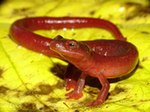Talamancan montane forests
| Talamancan montane forests | |
|---|---|
 Forests around the Turrialba Volcano in Costa Rica | |
 Ecoregion territory (mountains outlined in turquoise) | |
| Ecology | |
| Realm | Neotropical |
| Biome | tropical and subtropical moist broadleaf forests |
| Borders | |
| Geography | |
| Area | 16,300 km2 (6,300 sq mi) |
| Countries | |
| Conservation | |
| Conservation status | Relatively stable/intact [2] |
| Protected | 62%%[1] |
The Talamancan montane forests
.Setting
The Talamancan montane forests cover a discontinuous area of 16,300 square kilometers (6,300 sq mi) in Cordilleran mountains, including the
The montane forests are surrounded at lower elevations by lowland forests, including the Isthmian–Atlantic moist forests on the Atlantic (Caribbean) slope, the Isthmian–Pacific moist forests to the south on the Pacific slope, and the Costa Rican seasonal moist forests to the northwest.
Flora
The forests are made up of evergreen trees, including many species (genera
The forests are highly biodiverse, with many species including many endemic species. The Cordillera de Talamanca is home to an estimated 90% of Costa Rica's plant species. Over 30% of the ecoregion's plant species and over 50% of the high mountain flora are considered
Lower montane forests occur above 750 meters on the Atlantic slope and up to 1500 meters on the Pacific slope, extending up to 2300 meters elevation. The upper montane forests extend from approximately 2,300 meters up to 3,300 meters elevation. A belt of subalpine dwarf forests forms the transition between the montane forests and the high-elevation páramo alpine grasslands.[4][3]
Laurels and oaks are the predominant canopy trees in the lower montane forests, growing up to 40 meters high. Quercus copeyensis is the most common oak, and other common canopy trees include Mollinedia viridiflora, Trichilia havanensis, Ardisia glandulosomarginata, Chrysochlamys allenii, Billia hippocastanum, Damburneya salicina, Quetzalia occidentalis, Guarea tonduzii, Alchornea latifolia, Meliosma glabrata, Miconia platyphylla, Lozania mutisiana, Ocotea austinii, and Ocotea holdridgeana. Dwarf palms, including Geonoma orbignyana subsp. hoffmanniana, Chamaedorea warscewiczii, and Prestoea acuminata var. acuminata characterize the shrub layer, with the bamboo Aulonemia viscosa and the palm-like Sphaeradenia laucheana subsp. irazuensis.[5]
Evergreen
Fauna
The Costa Rican portion harbors 136 mammal species, the Panamanian 84. Characteristic mammals include jaguar, cougar, tapir, deer, anteater, and several species of monkey. The Talamancan oryzomys (Nephelomys devius) is endemic to the ecoregion.
Birds are also well represented. The Costa Rican portion holds 450 species, the Panamanian 225. Notable locally threatened birds in the forest are the resplendent quetzal, black guan (Chamaepetes unicolor), sulphur-winged parakeet, three-wattled bellbird, and bare-necked umbrellabird, which is found in both the Costa Rican and Panamanian region, and the harpy eagle, which can be found in the Panamanian region.
The ecoregion corresponds to the Costa Rica and Panama highlands
At least 7 amphibian species are endemic to the Cordillera including the splendid poison frog, Chiriquí fire salamander (Bolitoglossa cathyledecae), and Cordillera Talamanca salamander (Bolitoglossa sooyorum).[7][8]
-
Myiozetetes similis in Sarapiquí, Costa Rica
-
Bolitoglossa cathyledecae in Chiriquí Province, Panama
Conservation and threats
The Talamancan montane forests are one of Central America's most intact ecoregions, although the oak forests in particular have been cleared for pasture and charcoal making.
References
- ^ a b Talamancan montane forests. DOPA Explorer. Accessed 27 January 2023
- ^ a b c d "Talamancan montane forests". Terrestrial Ecoregions. World Wildlife Fund. Retrieved 2013-09-19.
- ^ a b c Schipper, Jan. Talamancan Montane Forests. One Earth. Accessed 27 January 2023.
- ^ a b Kappelle, M., Cleef, A. M., & Chaverri, A. (1992). Phytogeography of Talamanca Montane Quercus Forests, Costa Rica. Journal of Biogeography, 19(3), 299–315. https://doi.org/10.2307/2845453
- ^ a b Kappelle, M., van Uffelen, J.G. (2006). Altitudinal Zonation of Montane Oak Forests Along Climate and Soil Gradients in Costa Rica. In: Kappelle, M. (eds) Ecology and Conservation of Neotropical Montane Oak Forests. Ecological Studies, vol 185. Springer, Berlin, Heidelberg. https://doi.org/10.1007/3-540-28909-7_4
- ^ BirdLife International (2023) Endemic Bird Areas factsheet: Costa Rica and Panama highlands. Accessed 27 January 2023.
- ^ "Talamanca Range-La Amistad Reserves / La Amistad National Park". United Nations Educational, Scientific, and Cultural Organization. Retrieved 12 May 2021.
- PMID 36101121.


